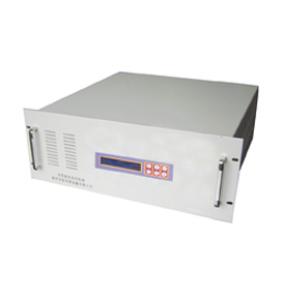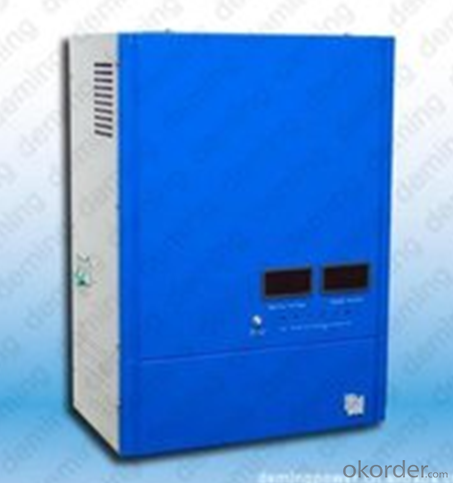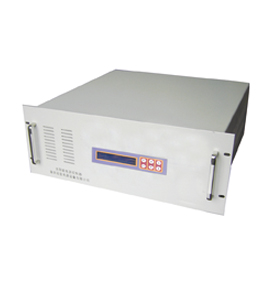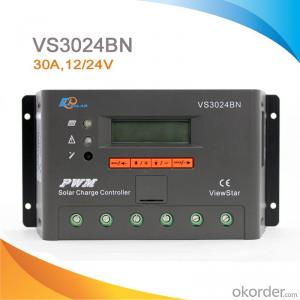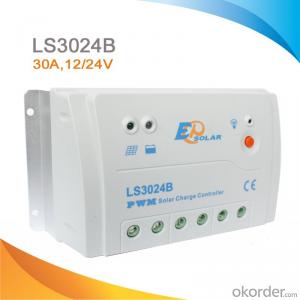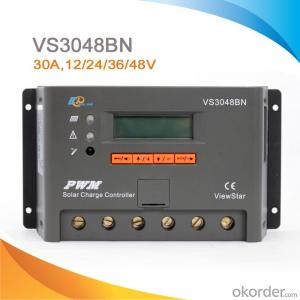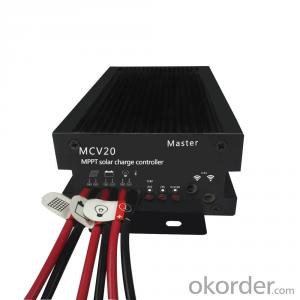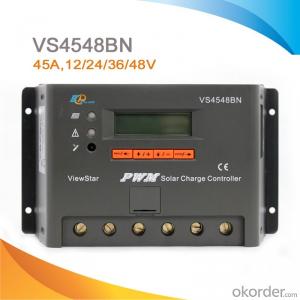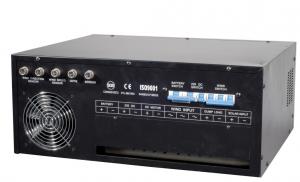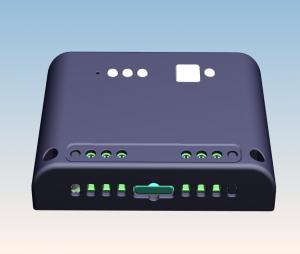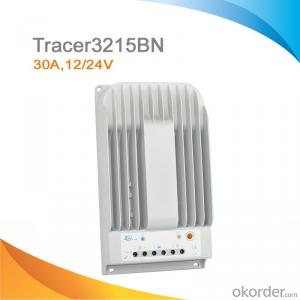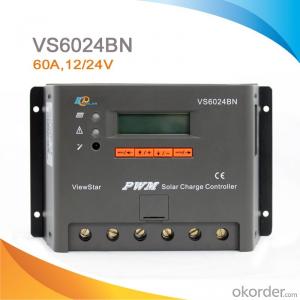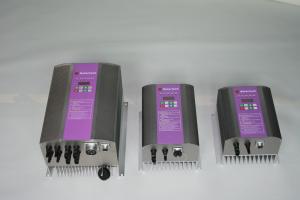Island Solar Controllers Inc PV Controller GS-30PDL4-R
OKorder Service Pledge
OKorder Financial Service
You Might Also Like
Description:
CNBMSOLAR is a world-leading and Vertical integrated manufacturer of high-performance with Silicon,
Wafer, Cells, Modules, which convert sunlight into electricity for residential, commercial, and utility-scale
power generation.
The capacity of CNBMSOLAR is reach to 1GW, and make sure each year our shipment capacity is more
Than 700-800MWs, at the same time, we have set up the largest solar power station with our partner
in Ukraine.
CNBM is a Quality + Service oriented company with“Excellence at Each Step” approach, composed of
the finest components from TUV and IEC-certified partners around the world, CNBM modules consistently
undergo a variety of trials at the company’s Test & Development Centre, ensuring peak performance
capabilities. The company is committed to develop and provide the world with clean and renewable energy
to ease the energy shortages as well as human kind’s impact on the environment.
Data:
Model | GS-30PDL4-R | |
Rated voltage | 48Vdc | |
Allowed Max charging current | 30A | |
Max discharging current | 30A | |
Charging loop | 4 | |
Charging current of each array loop | 7.5A | |
Output loop | 1 | |
Max open-circuit voltage | 100Vdc | |
Over charge protecting voltage | 56.8Vdc | |
Voltage down | Between arrary and battery | ≤0.7Vdc |
Between battery and load | ≤0.1Vdc | |
Display | LCD | |
Showing | Battery voltage,load current,charging current | |
Lighting devices | Optional | |
Protecting function | Overcharge,over voltage, short circuit, reverse polarity,reverse discharging and so on | |
IP class | IP20 | |
Noise | ≤60(dB,1m) | |
Environment temperature(℃) | -20~+50℃ | |
Altitude | ≤3000m | |
Dimension | 350*483*177mm | |
Weight | 18kg | |
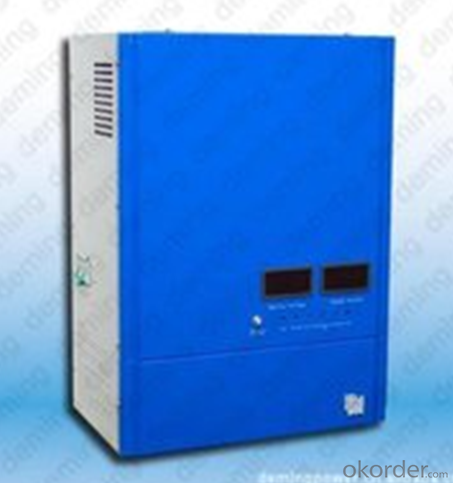
FAQ:Could you introduce more about CNBM?
CNBM Group is short for China National Building Materials Group Corporation, which is established in 1984 with approval from the State Council
CNBM Group is the largest comprehensive building materials industry group in China
The Group has a total asset of over RMB 360 billion, more than 180,000 employees and 17 subsidiaries
- Q: Is it necessary to have a solar controller for a small solar system?
- Yes, it is necessary to have a solar controller for a small solar system. A solar controller helps regulate and control the charging and discharging of the batteries in the system, ensuring optimal performance and preventing overcharging or deep discharging, which can damage the batteries. Additionally, a solar controller provides important information about the system's performance and helps protect the system from various electrical issues, making it an essential component for a small solar system.
- Q: What is the maximum self-consumption of a solar controller?
- The maximum self-consumption of a solar controller refers to the amount of energy that the controller itself consumes from the solar power it manages. This consumption can vary depending on the specific model and features of the controller, but generally, solar controllers have very low self-consumption rates, typically ranging from 1 to 5 watts.
- Q: How can I determine the size of solar controller I need for my system?
- In order to determine the appropriate size of a solar controller for your system, several factors should be taken into account. Firstly, calculate the total capacity of your solar panels in watts. This information can usually be found in the product specifications or on the back of the panels. Secondly, determine the total capacity of your battery bank in amp-hours (Ah). This information can usually be found on the batteries themselves or in their documentation. Next, ascertain the maximum charge current that your solar panels can produce. This information is typically provided in the solar panel specifications or user manual. Once you have gathered this information, you can utilize the following formula to calculate the required size of the solar controller: Controller Size (in amps) = (Solar Panel Capacity in watts / System Voltage) / Charge current For instance, if your solar panel capacity is 500 watts, your system voltage is 12 volts, and your solar panels can produce a maximum charge current of 25 amps, the required size of the solar controller would be: Controller Size = (500 watts / 12 volts) / 25 amps = 1.67 amps In this scenario, you would necessitate a solar controller with a capacity of at least 1.67 amps to ensure it can adequately handle the charging requirements of your system. It is essential to note that it is always prudent to select a solar controller with a slightly higher capacity than the calculated value to accommodate potential future expansions or increased power demands.
- Q: Can a solar controller be used with a solar-powered landfill gas extraction system?
- Yes, a solar controller can be used with a solar-powered landfill gas extraction system. The solar controller is responsible for regulating the flow of electricity from the solar panels to the extraction system, ensuring optimal performance and efficient energy utilization. By using a solar controller, the solar-powered landfill gas extraction system can effectively harness renewable solar energy to power the extraction process, reducing reliance on conventional energy sources.
- Q: Can a solar controller be used with solar panel anti-islanding protection?
- Yes, a solar controller can be used with solar panel anti-islanding protection. In fact, it is recommended to use a solar controller in conjunction with anti-islanding protection to ensure the safe operation of the solar panel system. A solar controller helps regulate the charging and discharging of the batteries, preventing overcharging or over-discharging. On the other hand, anti-islanding protection is a safety mechanism that disconnects the solar panel system from the grid in the event of a power outage or grid failure, preventing the solar panels from energizing the grid and potentially causing harm to utility workers. By using both a solar controller and anti-islanding protection, the solar panel system can operate efficiently and safely.
- Q: What is the maximum discharge voltage for a solar controller?
- The maximum discharge voltage for a solar controller typically depends on the specific model and manufacturer. However, in general, most solar controllers have a maximum discharge voltage of around 12-24 volts for 12-volt systems and 24-48 volts for 24-volt systems. It is important to consult the product specifications or user manual for accurate information regarding a particular solar controller's maximum discharge voltage.
- Q: How does a solar controller prevent over-discharging of batteries?
- A solar controller prevents over-discharging of batteries by monitoring the voltage level of the batteries and disconnecting the load when it reaches a predetermined low level. This prevents the batteries from being drained beyond their safe operating range, which can lead to damage and reduce their overall lifespan.
- Q: Can a solar controller be used with a remote monitoring system?
- Yes, a solar controller can be used with a remote monitoring system. A solar controller, also known as a charge controller, is an essential component of a solar power system. It regulates the flow of electricity from the solar panels to the battery bank, ensuring that the batteries are charged efficiently and preventing overcharging or damage to the batteries. A remote monitoring system allows users to monitor and control their solar power system from a distance, typically through a computer or mobile device. It provides real-time data on the performance of the solar panels, battery charge levels, and other important parameters. By integrating a solar controller with a remote monitoring system, users can easily and conveniently monitor the status and performance of their solar power system from anywhere. They can keep track of the battery charge levels, adjust charging settings, and receive alerts or notifications in case of any issues or abnormalities. This combination of a solar controller and a remote monitoring system not only enhances the overall efficiency and performance of the solar power system but also provides users with greater control and peace of mind. It allows for better management and optimization of the solar power system, ensuring maximum energy production and utilization.
- Q: Can a solar controller be used with a battery bank?
- Yes, a solar controller can be used with a battery bank. A solar controller helps regulate the charging process of the batteries in a battery bank, ensuring they are not overcharged or damaged. It monitors the voltage and current from the solar panels and manages the flow of energy to the batteries, optimizing their performance and extending their lifespan.
- Q: Can a solar controller be used with solar panels of different technologies (monocrystalline, polycrystalline, thin-film)?
- Yes, a solar controller can be used with solar panels of different technologies, including monocrystalline, polycrystalline, and thin-film. The purpose of a solar controller is to regulate the charging process of the battery or the power output from the solar panels to ensure optimal performance and prevent overcharging. It does not depend on the type of technology used in the solar panels. However, it is important to ensure that the solar controller is compatible with the voltage and current ratings of the solar panels being used to ensure efficient and safe operation.
Send your message to us
Island Solar Controllers Inc PV Controller GS-30PDL4-R
OKorder Service Pledge
OKorder Financial Service
Similar products
Hot products
Hot Searches
Related keywords

